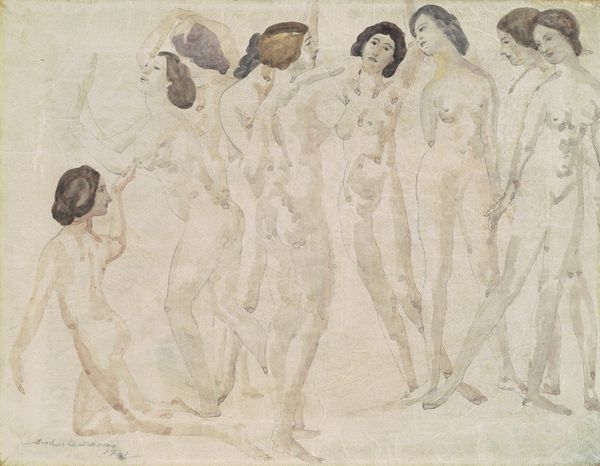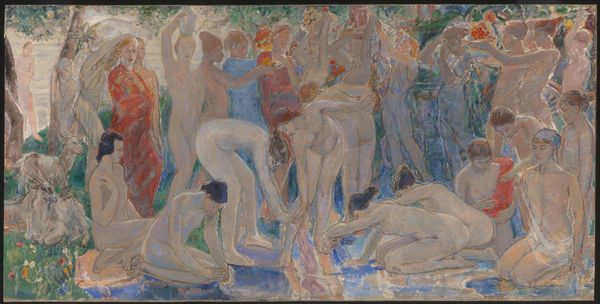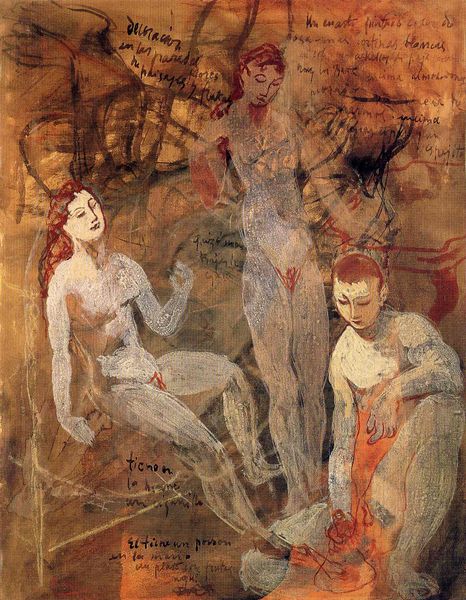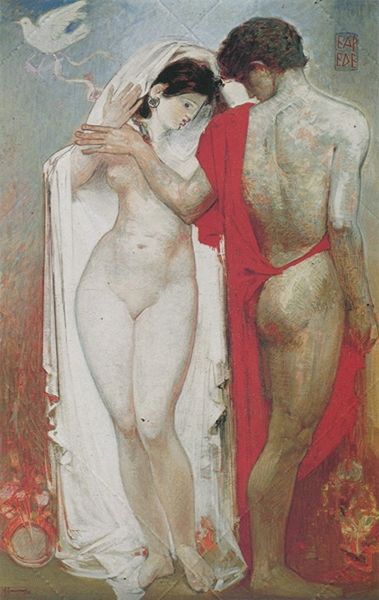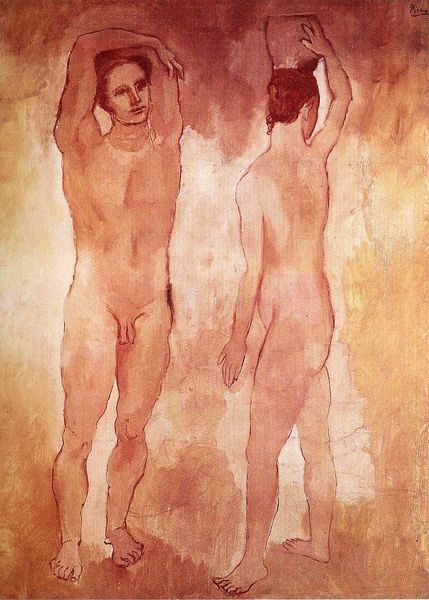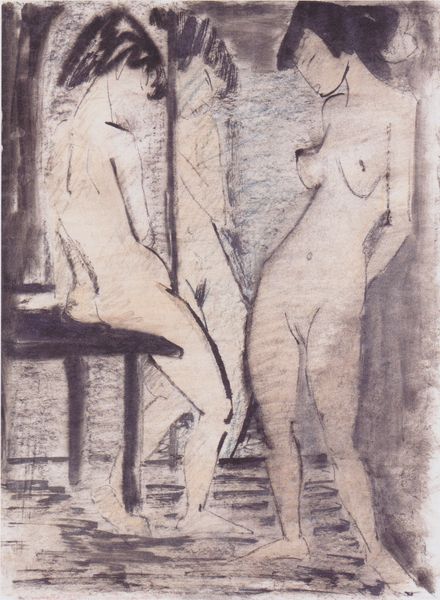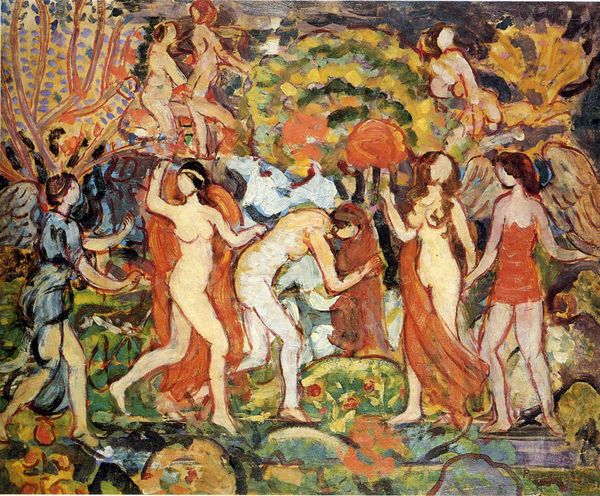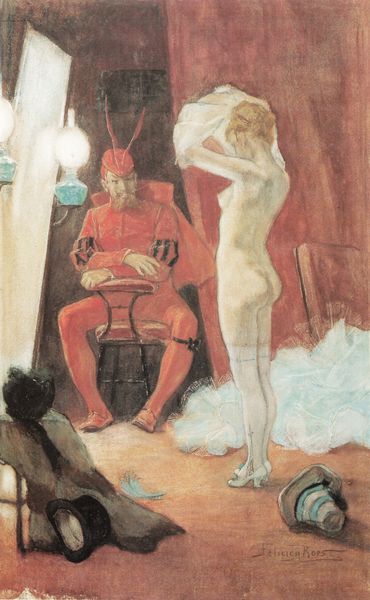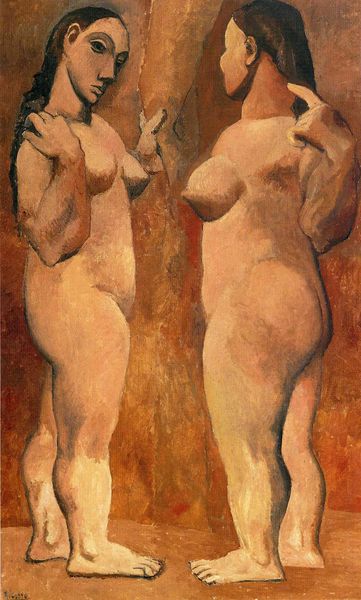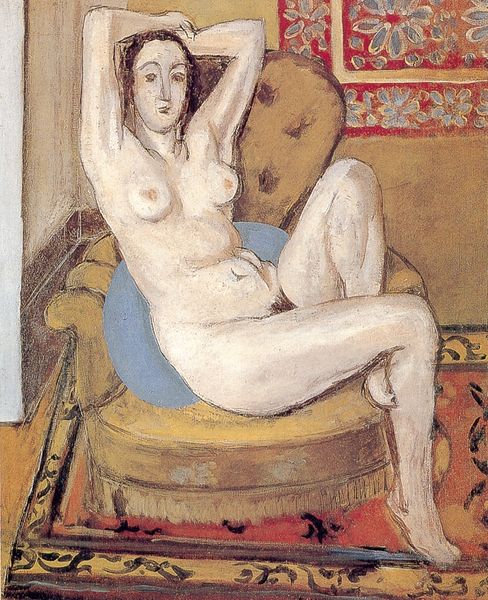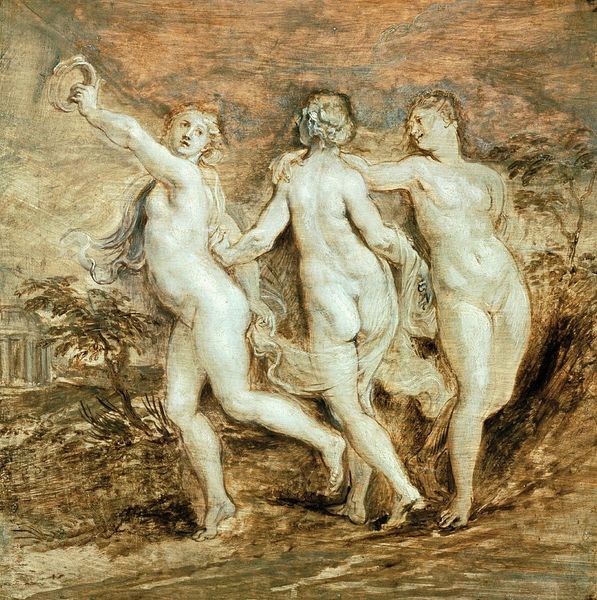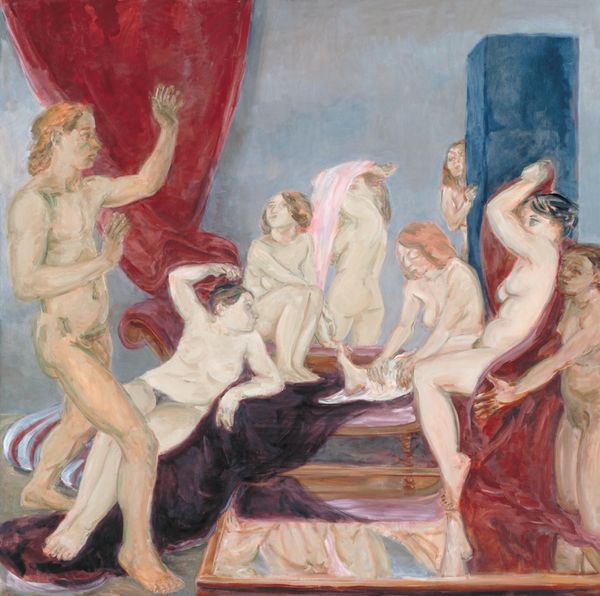
painting, oil-paint
#
portrait
#
cubism
#
art-nouveau
#
painting
#
oil-paint
#
figuration
#
oil painting
#
intimism
#
genre-painting
#
post-impressionism
#
nude
Dimensions: 154.3 x 109.5 cm
Copyright: Public domain US
Curator: Pablo Picasso's "The Harem," an oil on canvas completed in 1906, presents us with a complex, multi-figure composition. It has a distinctly intimate, perhaps even claustrophobic, feel. Editor: Yes, that's the word – claustrophobic! The overwhelming earth tones create an oppressive, interior space, further intensified by the tightly grouped figures. There's a visual weight pushing down. Curator: What’s striking is the visible process – the application of paint, the almost sculptural modelling of the bodies, the deliberate roughness. It speaks volumes about the labor involved and Picasso’s experimentation with form. We also need to think of it in the social context; such an image challenges prevailing notions of exoticism by displaying working class citizens from Europe. Editor: Formally, it is also interesting to note how the lines are deliberately blurred between figure and ground. There isn’t one single focal point that commands attention, which challenges the conventions of figurative painting itself. What narrative does the overall structure intend to express? Curator: It’s possible that Picasso drew inspiration from both the genre-painting of brothels of 19th century as well as his post-impressionism influences, challenging these through material process as he explored cubism. It reflects the gritty reality and perhaps, the casual transactions. Editor: You can see Picasso playing with color as structure. The dominance of red-oranges create a visual field, unifying all forms into something strangely flattened, reducing all spatial depth. The result is fascinating as he appears to reduce three dimensional depth to flatness while modeling his figure to become monumental through volumetric light. Curator: It's intriguing to consider how the social constructs of gender and class are challenged, and how Picasso pushes those ideas through the artistic conventions that formed them, via the techniques of representation at his disposal. Editor: It certainly complicates how we see representations of these figures as well as representations in visual art more broadly speaking! The picture ultimately serves to remind one to question all the structural qualities of painting as they have come to be formalized. Curator: Yes, this analysis encourages a consideration beyond simply its pictorial representation, into the very processes of its making and societal forces shaping it. Editor: "The Harem" is truly an art worth close analysis beyond initial impression!
Comments
No comments
Be the first to comment and join the conversation on the ultimate creative platform.
